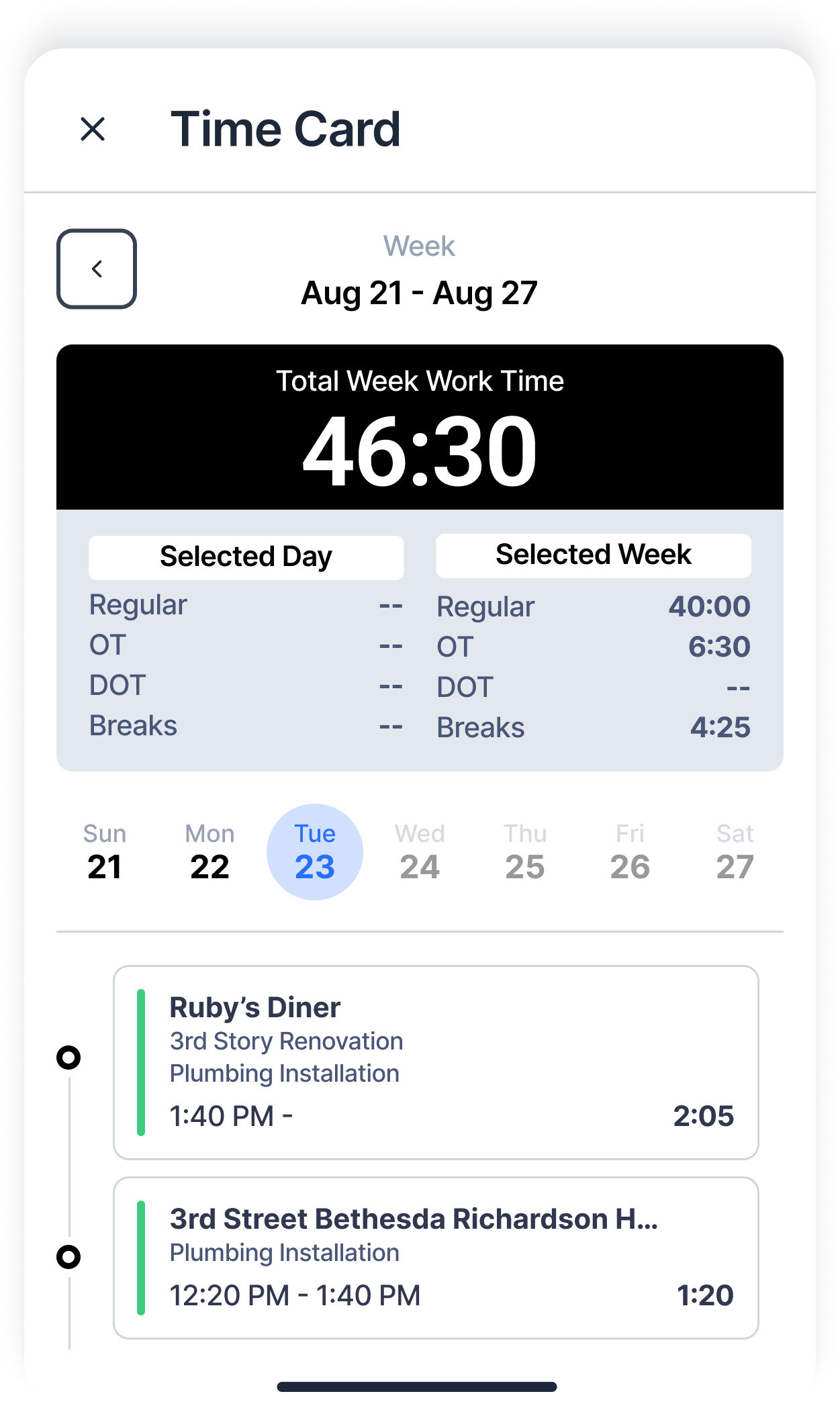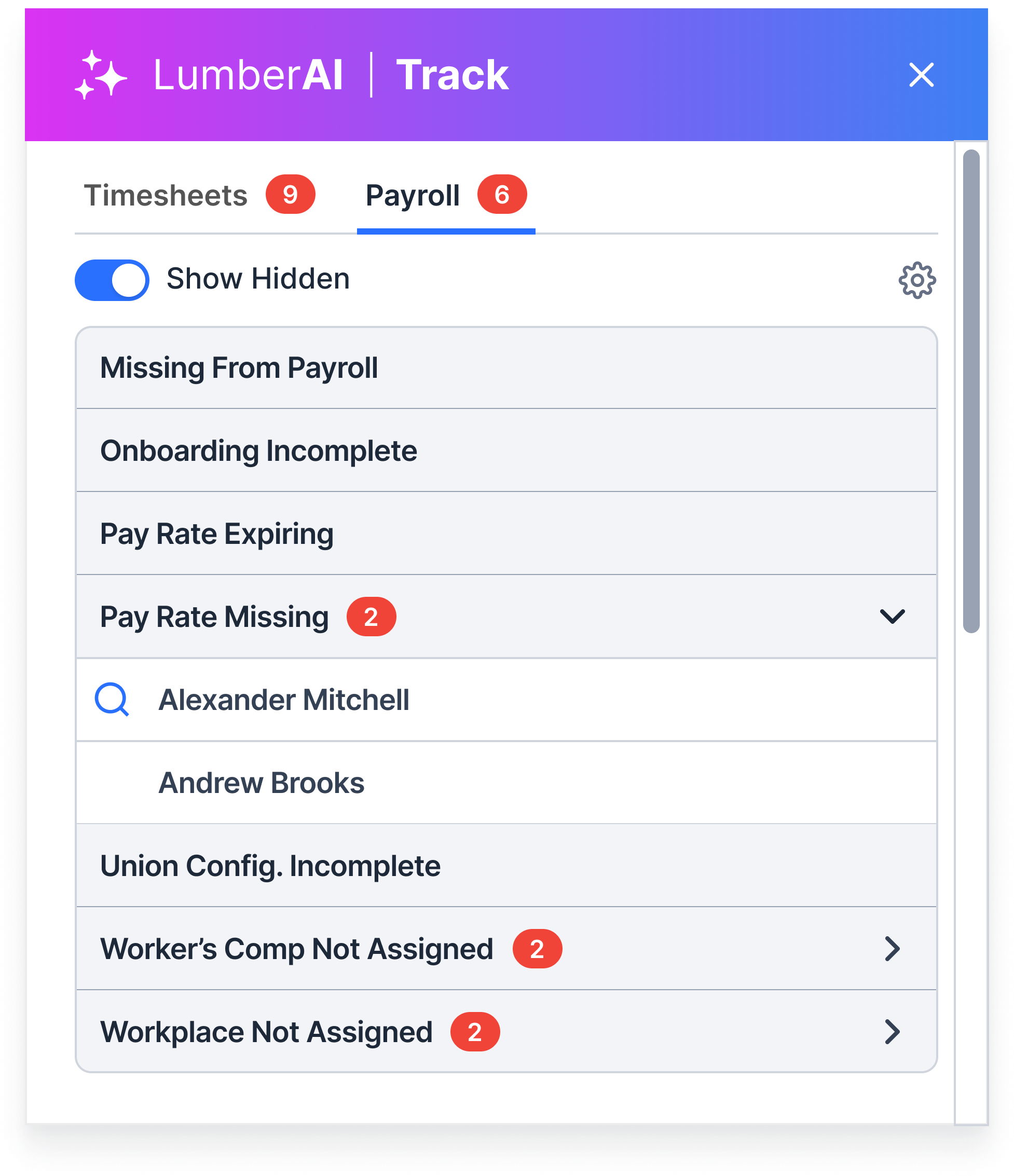Integrating Compliance With Business Operations: Turning Regulations Into Opportunity in Modern Construction

For years, construction compliance—particularly around prevailing wage, payroll, and safety—was seen mostly as a cost center or an administrative burden. Regulatory complexities, risk of penalties, and shifting legal requirements kept contractors, project owners, and agencies on their toes. But as digital transformation accelerates across the industry, more organizations are realizing that robust compliance isn’t just about minimizing risk; it can be a strategic advantage that drives performance, trust, and new business opportunities.
In this blog, we’ll explore how integrating compliance deeply into your overall business operations—using tools like Lumber and other best-in-class platforms—creates resilience, collaboration, and bottom-line benefits. We’ll cover practical steps, case studies, common pitfalls, and future trends, so your company can lead in compliance and construction excellence.
The Changing Landscape of Construction Compliance

Construction has always danced to the tune of regulations. Whether it’s state-level prevailing wage rules, local safety ordinances, or new federal requirements for apprenticeship ratios and minority hiring, the web grows ever more intricate. In the old model, companies held compliance at arm’s length: a dedicated team or consultant handled reports and audits, separate from project managers and field operations.
Today’s realities demand much more:
- Distributed teams, multiple worksites, and fast-moving projects require real-time data sharing and integrated systems.
- Agencies and clients expect transparency and digital reporting, and increasingly select partners based on proven compliance capacity.
- Workforce expectations have shifted - skilled workers seek employers who pay fairly, keep them safe, and listen to feedback.
Forward-thinking firms are responding by weaving compliance into the very fabric of their business processes - into scheduling, payroll, HR, project management, bidding, and beyond.
Why Integration Matters: Risks and Rewards

A siloed approach to compliance creates several risks:
- Inconsistent wage payments: Gaps between scheduling, time tracking, and payroll mean some workers may be underpaid, risking legal trouble and morale.
- Slow reporting: Manual or disconnected reporting leads to late submissions, withheld payments, and audit findings.
- Disjointed documentation: Documents living in different systems or with different teams get lost, especially in audits or disputes.
- Lost opportunities: Clients and agencies increasingly choose contractors who offer end-to-end transparency and compliance readiness.
On the other hand, an integrated, digital-first approach offers:
- Error reduction: Automated data transfer between scheduling, time tracking, HR, and payroll means fewer manual entries and mistakes.
- Faster reporting: Compliance data can be submitted automatically and in real time, supporting faster agency payments and reduced risk of audits.
- Greater trust: Digital, traceable records satisfy clients, regulators, and workers.
- Competitive differentiation: Firms with better compliance win more bids and secure long-term contracts.
Core Principles of Compliance Integration
The best compliance processes aren’t add-ons - they’re embedded throughout your operating model. Here’s how to make it happen.
1. Centralize Data and Documentation
Problem: If your timesheets, payroll, wage determinations, and safety reports live in separate apps or paper files, reconciling data is time-consuming and error-prone.
Solution: Use platforms, like Lumber, that consolidate all data in one secure place. Integrate with your payroll, HR, scheduling, and benefits systems so records move seamlessly from field to office.
Benefits: One-click audits, instant certified payroll generation, and simple document retrieval for disputes or inspections.
.png)
2. Automate Key Compliance Tasks
Problem: Manual calculation and report preparation drain time and inevitably lead to mistakes.
Solution: Platforms built for construction compliance automate wage calculations, apply correct fringe rates, generate required forms, and flag inconsistencies before you submit.
Benefits: Teams focus on building, not bureaucracy. Regulatory changes are handled by the software, not missed in the shuffle.
.png)
3. Empower Field Teams
Problem: Compliance can feel like a distant office responsibility to field staff, causing lack of accountability and missed updates.
Solution: Mobile-enabled tools allow workers and foremen to track hours, submit reports, review wage rates, and record safety incidents on their phones, directly feeding the compliance process.
Benefits: Boosts engagement, accuracy, and speed.

4. Strengthen Collaboration Between Functions
Problem: Compliance, HR, payroll, safety, and project management often operate in siloes, only sharing info at month-end or during crises.
Solution: Cross-train teams; use integrated dashboards that everyone can see and contribute to. Regular meetings bring compliance status into routine business review.
Benefits: Proactive issue spotting and culture of shared responsibility.
5. Leverage Predictive Analytics and AI
Problem: Most compliance processes are reactive, only catching problems after a payroll run or audit.
Solution: Platforms with built-in AI (like Lumber's LLM compliance engine) can flag patterns - overtime spikes, missed wage updates, safety violations, etc. allowing for preemptive fixes.
Benefits: Reduces penalties, builds trust, and supports continuous improvement.

Case Study: Integration in Action
Acme Construction, a regional contractor, struggled for years with payroll errors, delayed reports, and missed compliance opportunities. Projects were lost due to audit issues and reputational concerns. In 2024, the company moved to a fully integrated system, centralizing HR, payroll, scheduling, and compliance on Lumber.
What changed?
- Faster onboarding: New hires entered once, with wage rates, classifications, and eligibility automatically assigned.
- Accurate payroll: Over 95% drop in pay errors, all hours logged via mobile time tracking.
- On-time compliance: Weekly certified payroll forms filed automatically, with agency receipt confirmed.
- Field empowerment: Safety incidents and wage concerns tracked and addressed in real time.
- Bid success: Acme won three new public contracts, citing their compliance capabilities.
Lessons learned: Integration fostered a compliance-first culture, improved morale, and unlocked new opportunities.
Building the Business Case - ROI of Compliance Integration
While digital tools require investment, the payback is clear:
- Reduced penalties: Companies using automated platforms report drops of up to 90% in fines and audit findings.
- Faster receivables: On-time reporting leads to timely payments from agencies and primes.
- Lower admin cost: Fewer hours spent on manual reconciliation save tens of thousands per year.
- Retention and recruitment: Skilled workers prefer companies who pay correctly and demonstrate safety leadership.
Consider this simple ROI formula:

In almost every case, contractors integrating compliance through platforms like Lumber see ROI well above 300%, often recovering costs within months.
Common Pitfalls and How to Avoid Them

1. Over-customization: Trying to adapt generic payroll or HR software to prevailing wage rules often results in missed requirements. Choose solutions purpose-built for construction compliance.
2. Poor onboarding: Successful integration depends on leadership buy-in and thorough training for both office and field teams.
3. Delayed adoption: Waiting for an audit or penalty before upgrading systems can mean missed business and steeper costs. Proactive integration is always cheaper.
4. Neglecting subcontractor oversight: Primes are legally on the hook for subs’ compliance—integrated systems let you track, flag, and mentor subs before their mistakes become your liability.
Technology and the Future of Compliance: What’s Next?
The landscape continues to evolve in 2025 and beyond:
- Real-time wage updates: Wage rates will sync instantly with platforms, making manual lookup obsolete.
- Biometric time tracking: Facial recognition and location tracking will ensure only eligible workers log hours for particular contracts.
- Integrated safety analytics: Platforms pull data from wearables, site sensors, and incident reports, using AI to predict and prevent accidents—further tying compliance to project success.
- Digital document trails: Smart contracts and blockchain-backed certificates will secure wage and compliance records, ready for audit with zero friction.
Your choice of platform—such as Lumber—can future-proof your compliance and let you adapt to whatever new requirements, rules, or business models emerge.
Turning Compliance Into Opportunity: Strategies for Growth
Smart compliance isn’t just about avoiding loss—it unlocks new possibilities. Here’s how integrated compliance generates opportunity:
1. Win More Bids
Government and prime contractors favor organizations with proven compliance records. Digital transparency and track record become differentiators, not just requirements.
2. Maximize Workforce Performance
Streamlined processes mean crews are paid correctly, on time, and can focus on their craft, not bureaucracy.
3. Foster Culture and Reputation
Transparency, safety, and worker empowerment build a strong employer brand—attracting top talent, collaborators, and clients.
4. Open New Revenue Streams
Integrated compliance data helps you meet new requirements—like apprenticeship ratios or minority hiring—opening doors to specialized contracts or incentives.
5. Support Strategic Planning
Data-driven compliance processes provide analytics for labor costs, project performance, and workforce trends, shaping smarter bids, partnerships, and investments.
Getting Started: Integration Checklist
Ready to transform compliance from a burden to a strategic asset? Follow these steps:
- Audit existing systems: Map where payroll, HR, and scheduling live, and how they connect (or don’t).
- Engage leadership: Secure executive buy-in for change—make compliance a business priority.
- Select a purpose-built platform: Test systems like Lumber for integration capabilities, ease of use, and support.
- Plan the rollout: Implement in phases, pairing technical migration with training and communication.
- Monitor and optimize: Use dashboards and feedback loops to spot issues, adapt practices, and confirm ROI.
- Share results: Document successes—timely payments, audit passes, worker satisfaction—to cement buy-in across teams and clients.
Leading With Compliance in the Modern Era
Regulations in construction aren’t going away; if anything, they’re getting more challenging. But the real leaders, on every project and in every company are those who go beyond basic requirements to design seamless, integrated, and proactive compliance processes. These organizations enjoy fewer penalties, higher profitability, greater employee loyalty, and first pick of the best work.
Platforms like Lumber make this transition achievable and sustainable, bringing all your teams and data together, so you can focus not on bureaucracy but on building, innovating, and delivering excellence.
Stay tuned for future posts, where we’ll dig even deeper into advanced compliance analytics, evolving legal requirements, and interviews with the companies leading the charge in integrated construction management!






.webp)